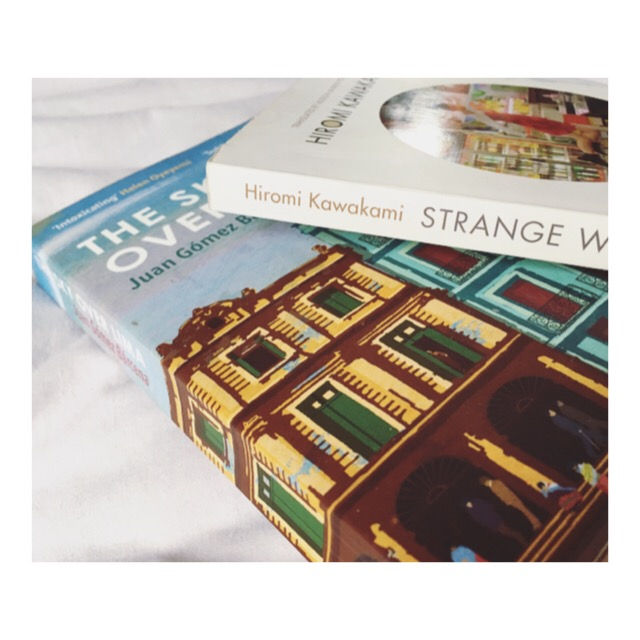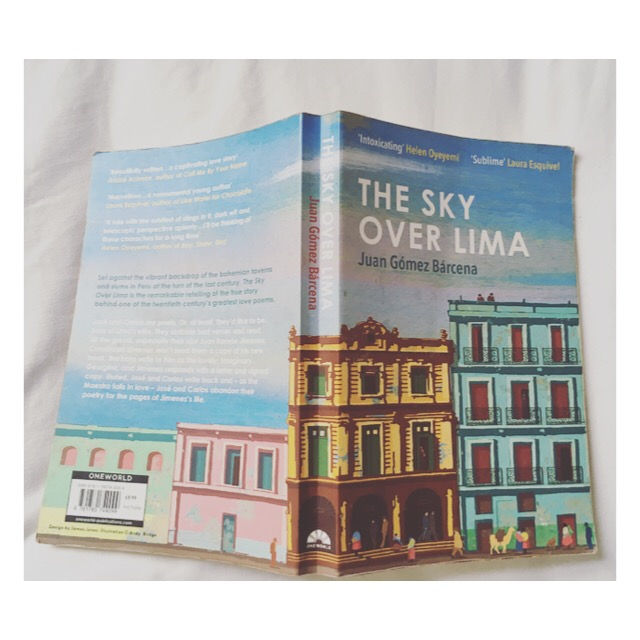FIVE FROM THE SHELF: Contemporary Translated Fiction
- theshelfldn
- Aug 30, 2017
- 5 min read

Over the last few years I have had a growing interest in translated fiction. For me literature is not only an escapist hobby, but one which allows me a genuine insight into experiences that I will never have. From fantastical adventures, to gritty tales grounded in realism an author will inevitably be influenced by the culture in which they live.
What better way than to discover a country I am yet to visit than to explore their literature. Since widening my reading landscape I have learned about historical events that had previously passed me by, discovered more about the cultures of far-flung countries, and felt my wanderlust grow with each day.
All the books on today's post focus on contemporary fiction I loved, I’ll be putting up a post that takes a look at some of the more celebrated classics of translated fiction very soon.
Strange Weather in Tokyo by Hiromi Kawakami (Japan) published by Portobello Press
Strange Weather in Tokyo follows the renewed relationship between a middle-aged woman and the man who taught her when she was a teenager. Yet this is not overflowing with romance and grand gestures, rather this is a slow tale of growing love. A love rooted in friendship where neither protagonist is quite sure as to the other’s intentions. Lingering unsaid throughout much of the novel is the age difference between the two, and the likelihood that Sensei’s death will come much sooner than that of the woman he loves, leaving her alone once more. Both Tsukiko and Sensei seem overwhelmingly lonely, and this fear of solitude can be felt throughout the narrative.
Kawakami writes in such a sensual manner, the landscapes are described with great poetry, while each of the many meals consumed in the novel are lingered over leisurely. This is a slow burner of the book, there are rare moments of explosive drama, rather the story is allowed to unfurl tentatively, much like the love story that is at its heart.
The Neapolitan Series by Elena Ferrante (Italy) published by Europa Editions
Spanning four books, Elena Ferrante’s Neapolitan series took the book world by storm last year, and rightly so. Put simply these novels tell the stories of two women, Lila and Lenu, who become friends as young children. Each book follows on from the last tracing their lives into middle age. We see relationships begin and end, loved ones die, and children born. The friendship takes centre stage throughout, and it is this that sets Ferrante’s books apart. The conflicting love and rivalry of the women is told with such insight and subtlety in a way female friendship is rarely portrayed. The women cling to each other, yet at the same time loath the successes of the other.
It is impossible when reading these books not to become fully immersed in Ferrante’s vision. The landscape she depicts is described in painstaking detail that transports us to the streets of Naples. As we witness each woman trying to escape the poverty of their Italian hometown, a cast of characters is introduced, each one fully developed, with their own ambitions and heartbreak. These novels are operatic in their scale, creating drama for even those characters with the smallest of cameos.
Yet the book offers so much more than excellent character development. The themes Ferrante tackles within this novel are numerous. Social mobility, the rise of fascism, education, rights for women and abuse within marriage are all explored rigorously across the series, leaving the reader with a genuine insight into mid 20th century Italian life.
Maybe This Time by Alois Hotschnig (Austria) published by Peirene Press
Peirene Press is a fantastic publisher dedicated to releasing short European fiction. Alois Hotschnig’s Maybe This Time is a sinister short story collection where everyday banality meets the surreal and disturbing. Stand out stories include ‘The Same Silence, The Same Door’ which follows the protagonist’s growing obsession with his neighbours, and “Then a Door Swings Open and Swings Shut”, an incredibly eerie tale of a man who discovers a doll made in his image when exploring the house of an old woman.
Reviews of this book have often referenced the work of David Lynch, Franz Kafka and Roald Dahl’s stories for adults. It is true that Hotschnig captures a similar sense of darkness, isolation and helplessness against the inevitable that these artists are famed for. That balance between normality and terror leaves the reader with the notion that our own lives are only steps aware from the nightmarish worlds Hotschnig creates.
The Presidents Hat by Antoine Laurain (France) published by Gallic
Antoine Laurain’s The President’s Hat can be held almost entirely responsible for my newfound love of non-English writing. This is an incredibly readable book. It is fun, fast-paced and wonderfully sweet without being saccharine. For those looking for cosy reads on a cold day, there is no other book I can more highly recommend to just have a lovely time reading.
This story begins when our protagonist Daniel Mercier picks up a hat left in a restaurant by the past French President Mitterand. On a whim he takes the hat for his own, and in doing his timidity gives way to confidence. As the hat passes from owner to owner, each character finds themselves transformed. A right-wing gentleman develops an interest in left-wing liberalism, a woman stands up to the man with who she is having an affair, and a perfumer has a spark of genius. The atmosphere of the novel is overwhelmingly French, teetering close to overly stereotypical, yet Laurain’s sense of whimsy helps the novel remain witty and warm, rather than slip into formulaic prose.

The Sky Over Lima by Juan Gómez Bárcena (Spain)
Translated by Andrea Rosenburg and published by One World Publications
Two amateur poets write to their literary hero posing as a beautiful young woman. As the lie continues, the famed poet falls deeper in love with the woman he believes is reading his letters, while the aspiring writers loose grip on their own lives. Throughout the novel an omniscient narrator gently mocks the pretensions of our two wealthy protagonists, who despite painting themselves as impoverished artists fail to comprehend the genuine poverty of those who live around them.
For a novel that is above all full of warmth and wit, Juan Gómez Bárcena’s debut packs in themes of social class and mobility, gender expectations and workers rights. Above all, this book is a celebration of artistry. We follow one of the poets growing obsession with the woman he creates, placing her as the pinnacle to which all women (about whom he knows very little) must strive to reach. His infatuation for her is not a love for an individual, but love for the opportunity to create something that is perfect.
As the novel draws to an end we are left questioning just where the line between reality and artifice lays.
While writing this post I have become increasingly aware that though I do strive to be diverse in my reading habits, there is definitely a tendency to read European authors. This is definitely something I would really like to fix.
I’d love to hear of any recommendations that any of you have, particularly for translated fiction written outside of Europe, or if you’ve read any of the books I’ve recommended please let me know your thoughts!

Comments